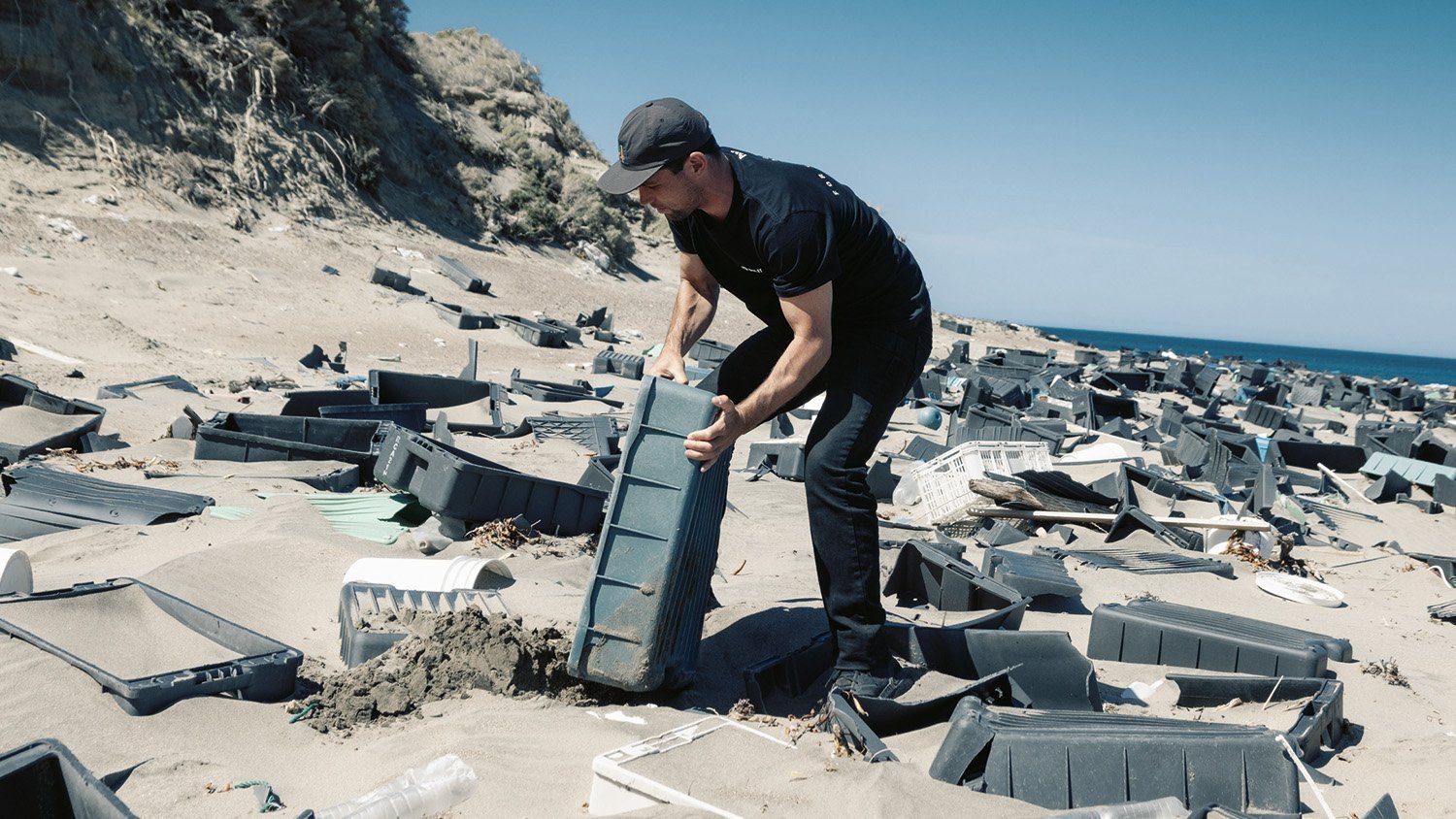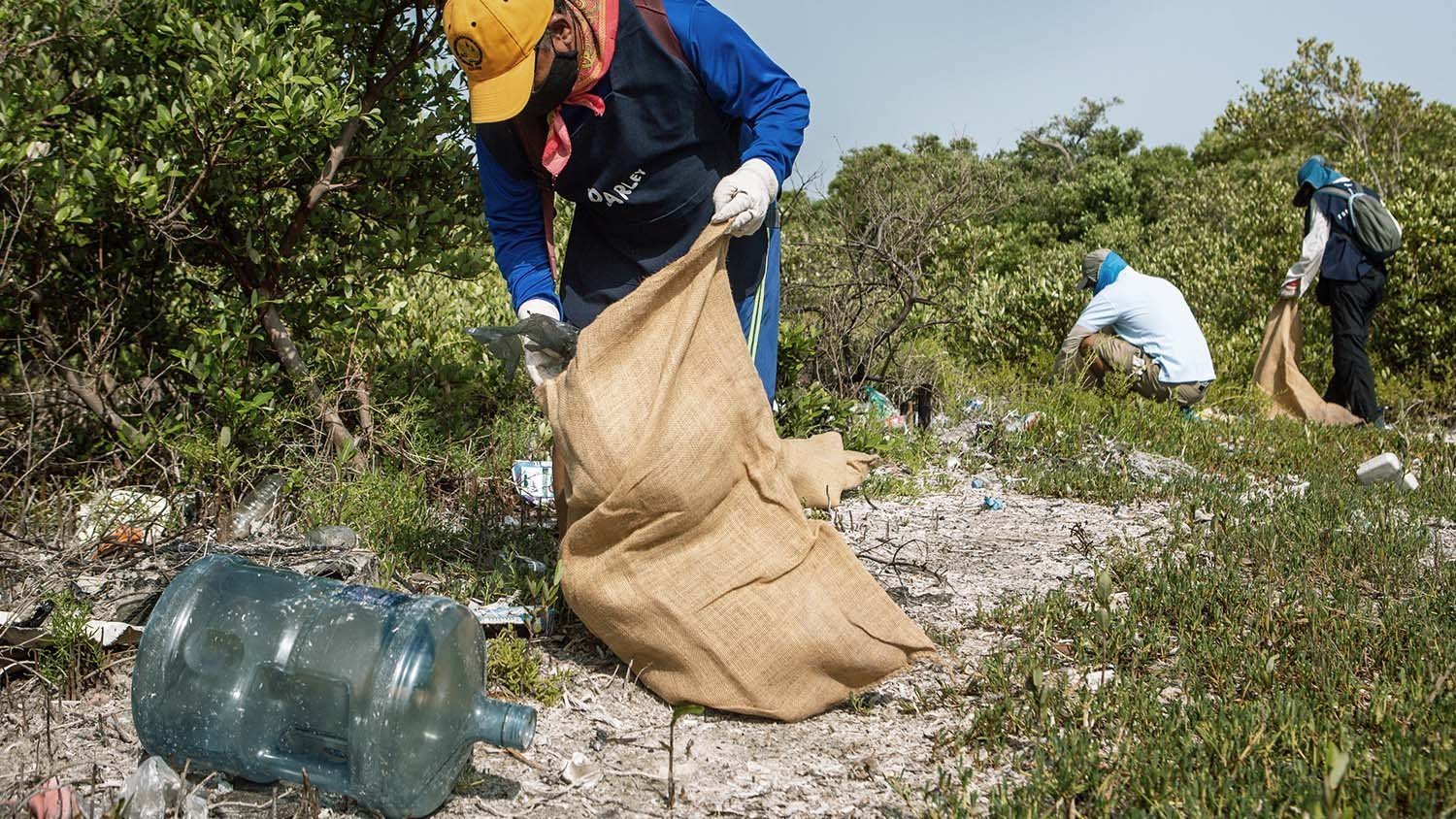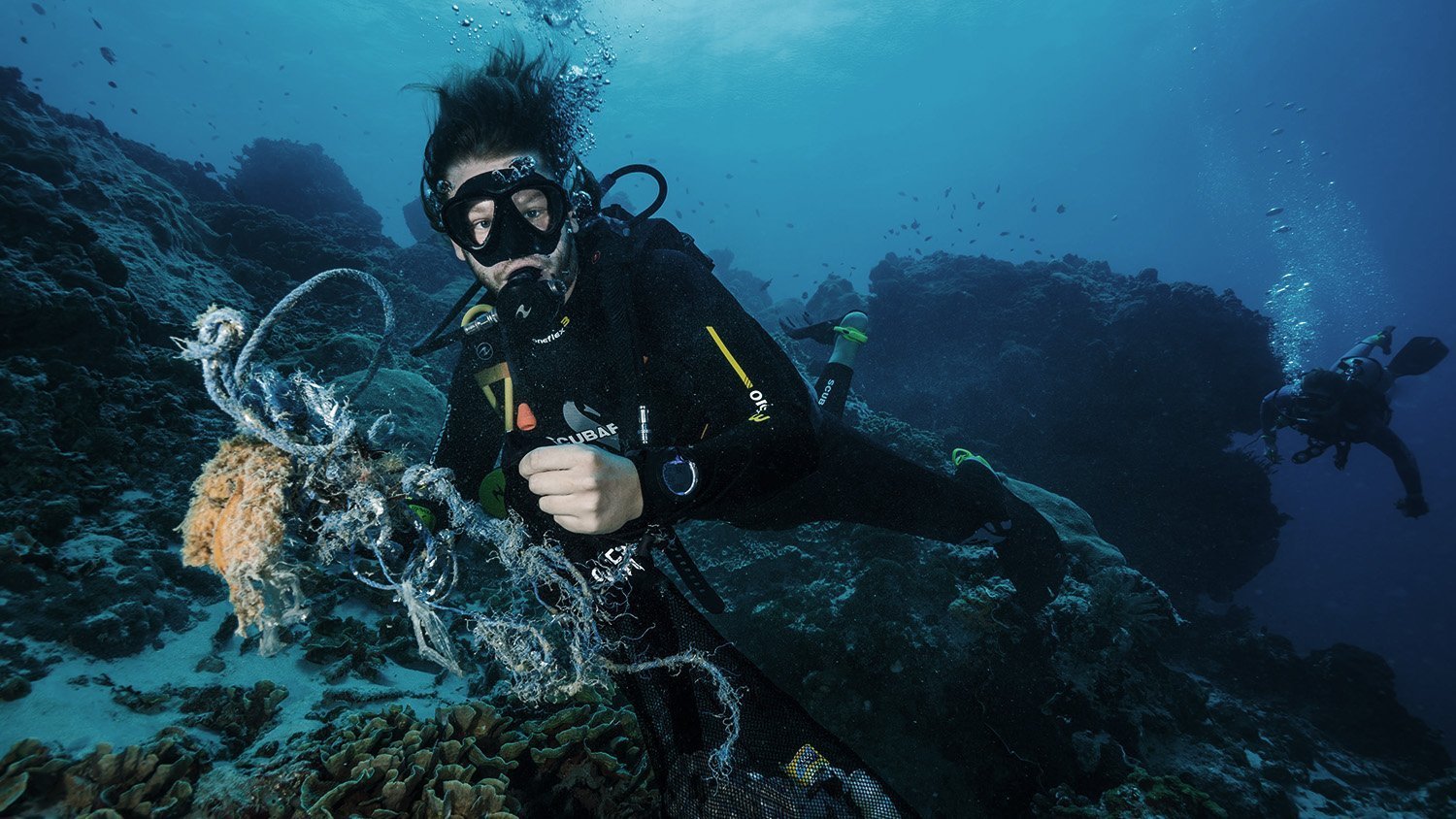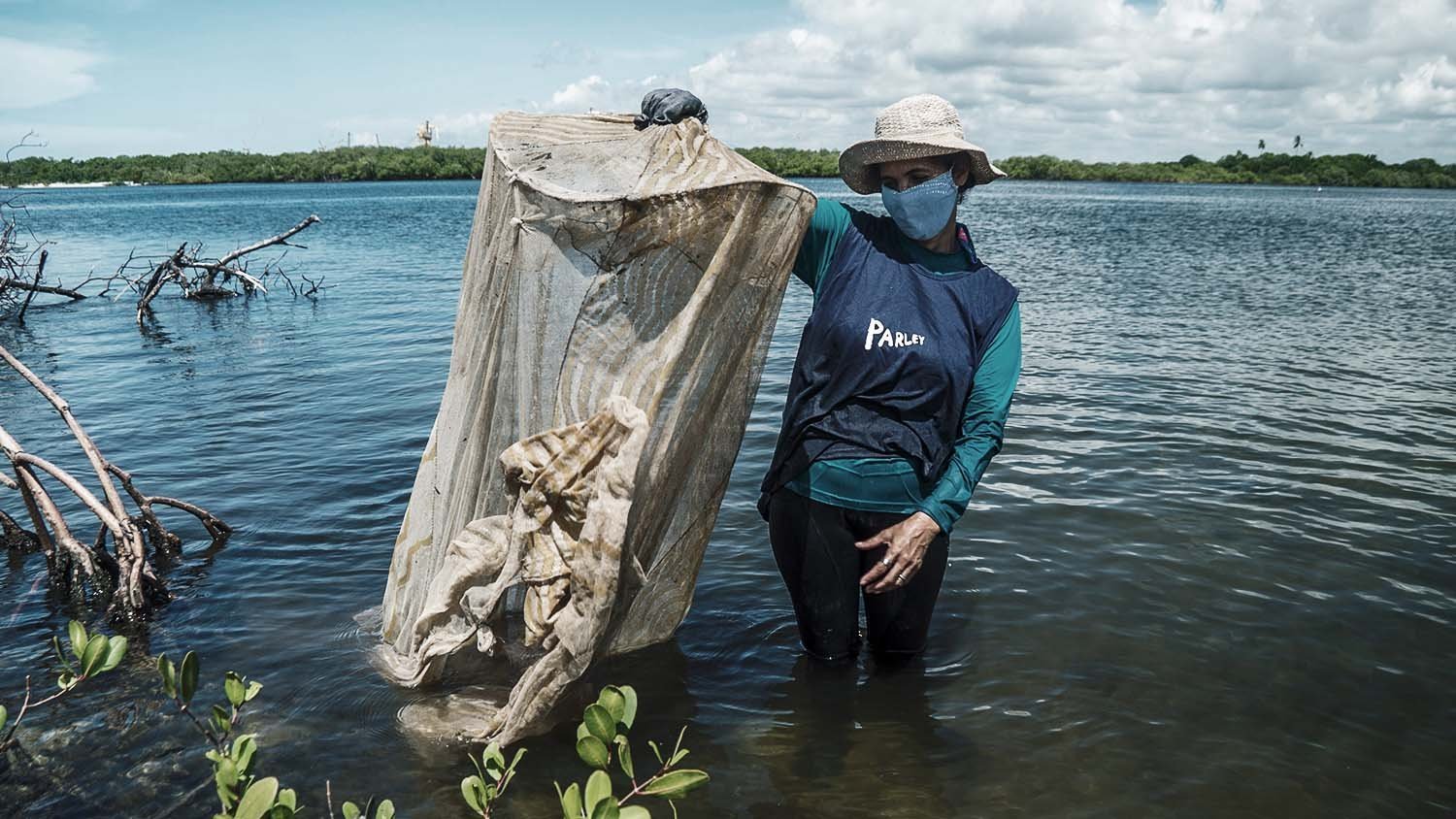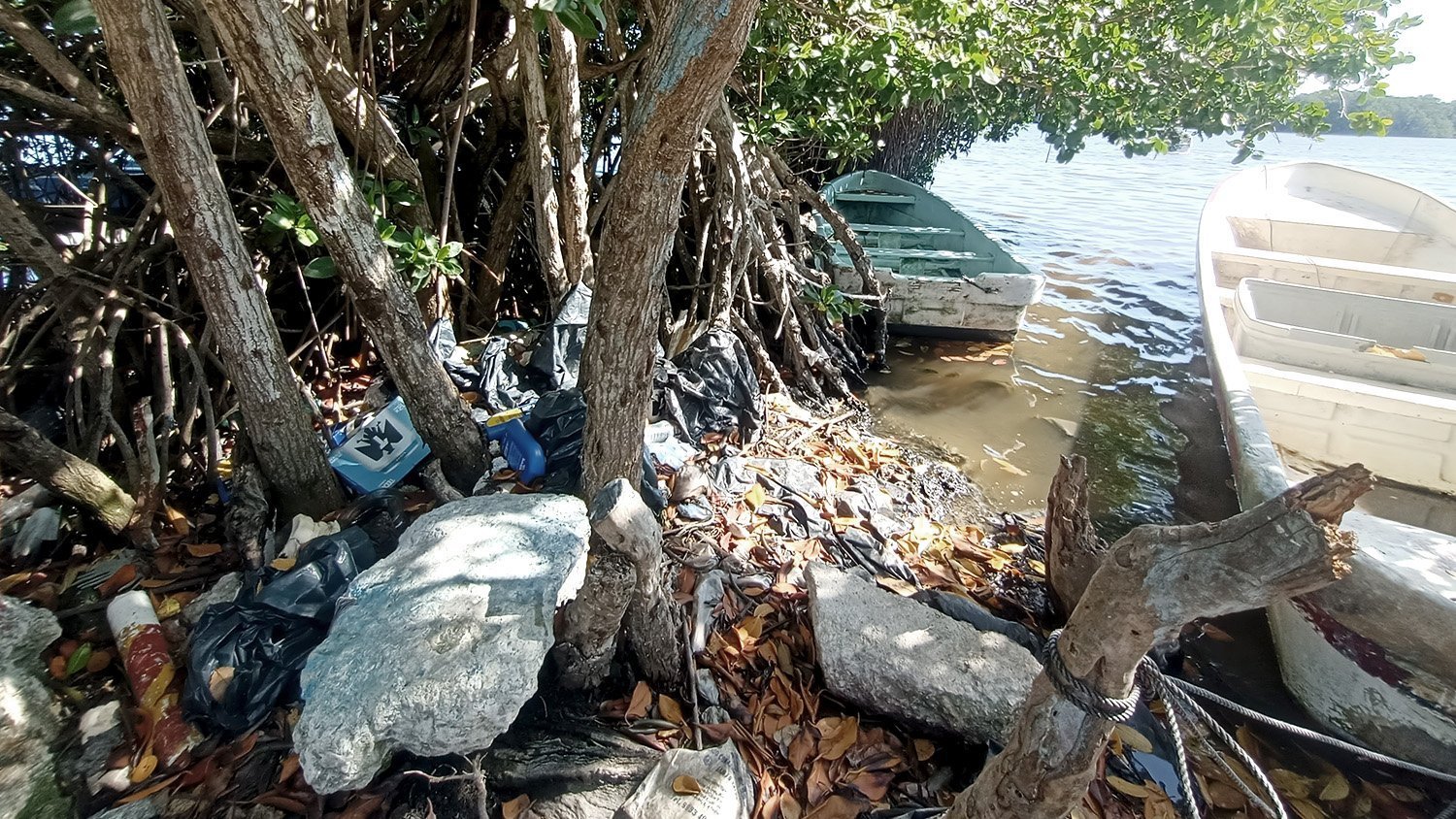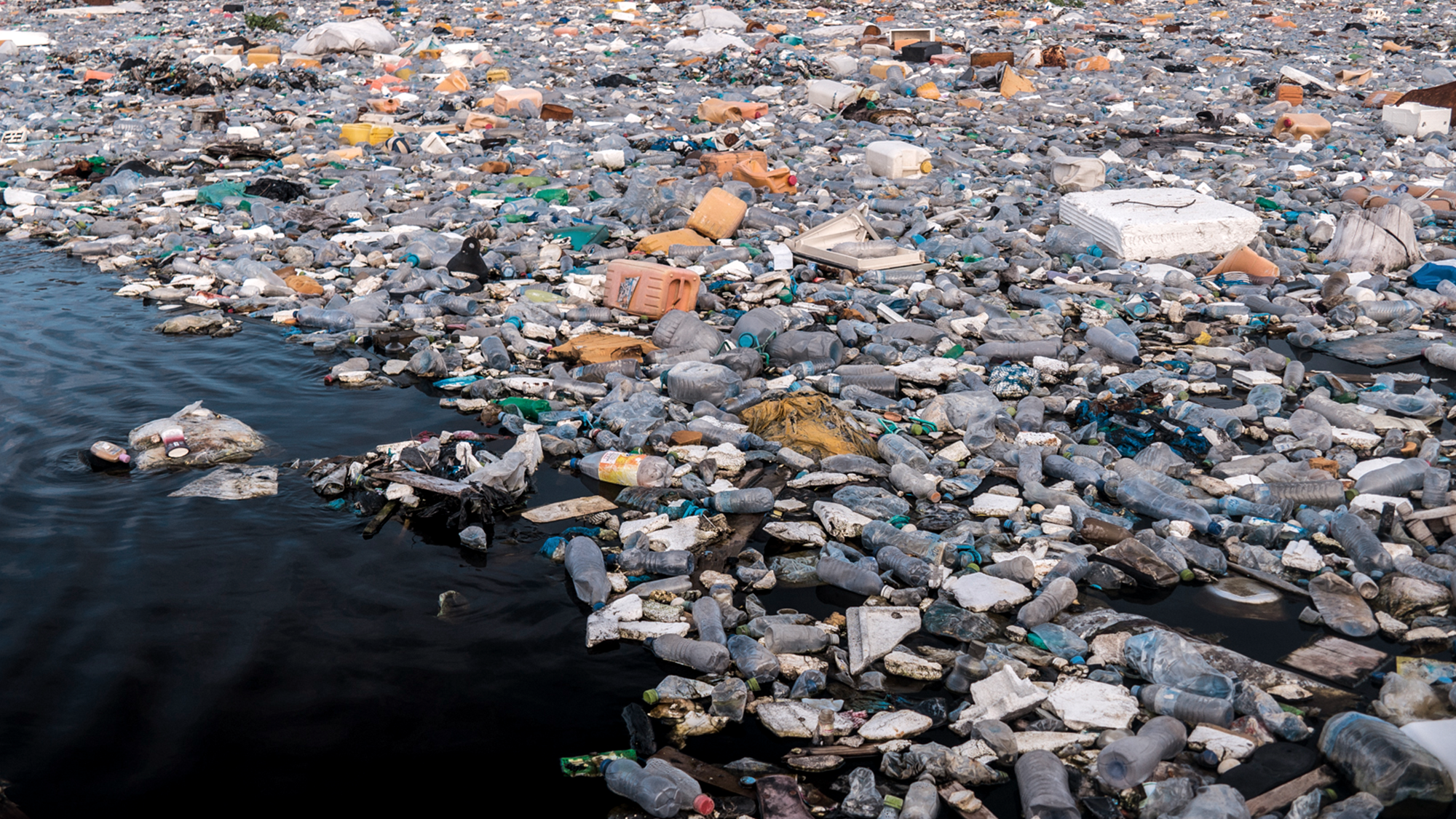Parley AIR: Why we do cleanups
Are coastal cleanups actually helping?
Parley for the Oceans team members and nearly 380,500 volunteers joined forces to organize 13,364 cleanups in 2022. It’s the largest group of volunteers we’ve ever had, bringing our total to over 1,042,514 participants.
This year, our cleanups collected plastic and other trash from beaches in 28 countries around the world, from Sri Lanka to Mexico. Since 2015, together with our collaborators we’ve collected over 7.2 million pounds of debris, including almost 5.5 million pounds of plastic, through cleanup action. Combined with the impact of our coastal community plastic interception programs, we've diverted 16.9 million pounds of debris away from marine environments.
That’s a lot of big numbers to wrap your head around, and still not enough to contend with the millions of tons of plastic that end up in our oceans every year. After every cleanup, the tide carries in more plastic, while more and more is produced from fossil fuels. So why do we do it? Is the effort worth it? In short, yes, it is.
Coastline cleanups are part of a bigger puzzle. Intercepting plastic before it enters the oceans in the first place, largely through rivers, and putting pressure on the companies that produce the most plastic to switch to non-plastic materials are at the core of stemming the stream of plastic flowing into our oceans. But we need all of the parts to solve the problem, and that includes removing the plastic that’s already made it into the seas.
Cleanups don’t require equipment or special skills, meaning it’s a realistic way everyone, from anywhere, can have an impact.
To wrap up 2022, we’ve put together this explainer to show the very real impact beach cleanups have on not only getting plastic trash out of our oceans, but safeguarding the fragile, irreplaceable marine ecosystems that plastic pollution directly harms, especially when it washes ashore.
When you take a look at how local ecosystems are directly impacted by marine plastic pollution, it becomes clear that every effort counts.
Take the Parley AIR Pledge and receive our monthly AIR newsletter
Why coastlines?
Ninety-nine percent of the habitable space on this planet is in our oceans. Coastlines are what connect us land-dwellers to this vast, life-filled part of Earth. Coastlines aren’t just easily accessible, research has shown they’re also opportune places to intercept plastic pollution.
For years, models have guessed that most plastic that enters the oceans gets caught in large systems of ocean currents called gyres, which keeps this pollution in the deep seas. But a recent study by researchers at the University of Bern in Switzerland tipped that notion on its head. The scientists found that most plastic that enters our oceans doesn’t stay in the open sea. In fact, they estimated that about 80% of floating marine plastic waste is swept no more than 10 kilometers, or about 6 miles, from a coast, even five years after it enters the seas.
A lot of plastic pollution also washes ashore, providing humans with an opportunity to capture it so it doesn’t break down into microplastics or get washed back out to sea, where it either gets lost or requires specialized equipment and skills to retrieve.
Organized beach cleanups can also intercept plastic trash before it can enter the oceans in the first place. The most common sources of plastic debris found on beaches aren’t fishing nets or nurdles, they’re everyday items like cigarette butts, food wrappers, beverage bottles, straws, cups and plates, bottle caps and single-use bags.
Localized help for impacted ecosystems
One of the biggest ways beach cleanups help reverse the damage plastic pollution does is by cleaning it from the immediate marine ecosystems it chokes. Mangroves, coral reefs, animal feeding grounds and nesting areas are all damaged by plastic pollution, often to a point that renders them poisonous. Cleanups are a catalyst that communities can use to directly and positively impact their local wildlife and coastline.
💥 Update: In October 2023, a report from one of Norway's largest research organizations found that Intercepting plastic waste effectively prevents microplastics from forming. It may sound obvious, but cleaning up larger plastic items really works. Experts at NORCE Research found that within a year of volunteers removing bottles, bags and plastic from the coastline of an island near Bergen, the amount of microplastics on land and in the water fell by 99.5%. Gunhild Bodtker, senior researcher at Norce, told Sky News: "I was happily surprised because it means the cleanup has efficiently reduced the leakage of microplastic into the sea – and that is really good news. Clean up plastic on the shores, clean up all the plastic in the environment. It really makes a difference."
Nesting areas
In October of 2022, Parley Argentina lead Yago Lange led a cleanup that removed a dense accumulation of fishing gear from a seal nesting site. The location, a remote protected area on Patagonia’s coastline, which is also a UNESCO World Heritage Site, was choked with plastic bins, buckets and fishing gear.
"Yesterday I visited the most polluted area I have ever been to. I estimated around 20,000 kg of plastic, mainly from the fishing industry. Plastic boxes, fishing nets, single-use plastic, but this only represents one small area of a vast coastline. There is no easy access by land to this remote area and only a few descents from the cliffs. I've never been surrounded by so much pollution, just a few meters away from the water and elephant seals,” Yago said.
This is far from the only place on Earth where plastic pollution has taken over the areas animals rely on to reproduce.
This year, regular cleanups in Mexico cleaned plastic pollution from turtle nesting sites. Turtles are already faced with deadly light pollution and development along the beaches they nest on. Removing plastic pollution through beach cleanups is one way humans can potentially increase their odds of survival. Mexico is a crucial area to concentrate these efforts.
Mexico has the most diversity of sea turtles in the world. Six of the planet’s 7 species of marine turtles live off the coasts of Baja California Sur down to the Caribbean. And every year, on Mexico’s Yucatán Peninsula, four of the planet’s seven species of sea turtle come to nest amid the area’s beaches and dunes.
Hawksbills, green sea turtles, loggerheads and leatherback sea turtles all prefer areas where there is no artificial light and noise, and places where the dunes and their vegetation are left in-tact. But these more remote areas are often polluted by marine plastic waste.
The threat this plastic pollution poses for sea turtles is multi-pronged. Turtles and other animals mistake the plastic for food and ingest it, or get tangled in fishing lines and ghost nets.
Plastic build-up on beaches and sand dunes can increase the temperature of nests. If this heating passes a critical threshold, the eggs in the nest can die. Since temperature determines the sex of turtles still in their shells, rising temperatures can also cause all of the turtles born to be females, messing with the population’s ability to reproduce in the next generation. According to Guillermo Herrera, Parley Mexico’s environmental education coordinator, plastic waste can also cause deformities in turtle shells.
This year, Parley Mexico’s cleanup efforts have concentrated on Isla Contoy, an uninhibited island just off the coast of Cancún. The area is a critical nesting site for the four species of sea turtle that nest in the Yucatán.
Coral reefs
Coral reefs are the most biologically diverse of all marine ecosystems. They support an estimated 25% of all marine life and 32 of the current 34 existing animal phyla in our oceans. These delicate ecosystems are also critically impacted by plastic pollution.
Coral reefs themselves ingest microplastics and starve to death, removing the foundation for all the life they support. Parley teams have been working to remove ghostnets in Panama and Mexico, especially from fragile coral reefs where they can sway back and forth, damaging the coral and entangling wildlife.
Parley Australia teams and volunteers have rallied to collect more than 100,000 kilograms (about 220,500 pounds) of trash from beaches in Cape York in Queensland, Australia. This stretch of coastline acts as a gateway to the Great Barrier Reef Marine Park, and every piece of plastic trash intercepted here directly protects the world’s largest coral reef.
Because the beach is fragile, they do everything on foot, often walking as much as 20 kilometers (about 12.5 miles) a day to reach impacted beaches.
“We see turtles and dugong on our cleanup trips, sharks and rays, whales and dolphins. We find plastic containers with shark bites in them, ” said Belinda Flanders, a member of the Parley Australia team.
Right now, her team is researching solutions to another problem: What to do with plastic debris once it’s collected from coastlines. The bulk of the marine plastic pollution problem is in northern Australia, while the facilities that can recycle it are in the south.
“We can easily remove it from the beach but there is not yet one solution for Parley to effectively process the material locally,” said Belinda. “It's not so much a struggle as a challenge. We care and think deeply about how the material will be used next.”
Mangroves & seagrass beds
Plastic pollution creates a physical barrier that prevents mangroves and seagrass beds from growing, thriving, and ultimately being huge carbon sinks. It also starves the plants of oxygen. And while cleaning them up may seem like an insurmountable task, research has shown that the amount of plastic a mangrove traps is really important.
When it comes to natural filters, mangroves are particularly good at trapping debris like floating plastic pollution. But it comes at a cost.
Mangroves adapt to withstand some plastic pollution, which collects in the shrubs’ extensive root systems. But too much of it kills both the coastal swamps and the crabs, molluscs and microbes that live there.
A study on mangroves in Java published earlier this year determined that plastic covers as much as half of the mangrove floor in Demak, a town on the country’s northern coast. And how much plastic the swamp was tasked with filtering makes a huge difference. If a tree’s root system was completely buried in plastic, the tree dropped its leaves and suffocated to death. Mangroves that were only partially covered in plastic were relatively resilient, the researchers found.
Mangrove forests grow on at least 150 of the 1,190 Maldivian islands. In 2022, the Parley Global Cleanup Network collected nearly 2 million kilograms (55 million pounds) of trash from beaches in the Maldives. Teams also worked hard to clean beaches in Palau, Sri Lanka, Brazil and Australia, all of which are home to these massive carbon sinks.
Remote & rugged spaces
Parley cleanup on Kauai Island
On islands in particular, marine pollution that washes onto coastlines can become a social justice issue. “In Hawai’i we’re all one ecosystem but there is a clear distinction between the on-shore and off-shore coastlines. This is the same for almost every island in the world,” said Kahi Pacarro, chief executive officer of Parley Hawai’i.
In Hawai’i, the beaches on the side of the islands with offshore winds — in which winds come from land rather than sea — are the places where resorts have set-up shop. That’s because the beaches are generally cleaner since the wind doesn’t blow in pollution from the oceans. The sides of islands exposed to on-shore winds are typically home to underserved populations of people or rugged expanses that are refuges to animals since they receive very little human traffic.
“It’s a rare situation where the winds switch and start bringing the debris to land on the off-shore side of the island,” said Kahi. This happened a couple of years ago in a tourist area. The winds shifted, washing plastic bottles, bags and fishing gear onto the famous Waikiki Beach.
“All of the sudden the government started to care and call us to deal with it because it was visible. But that same type of debris is washing up every day on the other side of the island,” said Kahi. Aside from being starkly divided in who on the islands is forced to see — and deal with — plastic pollution brought in from the oceans, Hawai’i is also the extinction capital of the world. One species, the monk seal, is especially prone to beach plastic.
“We only have 1,400 left. Every single one counts. They’re very curious so they play with the debris and removing pollution from the coastlines keeps monk seals from becoming entangled and dying,” said Kahi.
Image: Ken G Kosada
An opportunity for education
Kahi remembers the first time a friend taught him about microplastic pollution. He had taken a couple friends from New Zealand to the beach he grew up surfing, Kailua Beach on Oahu’s southwestern shore.
“I was showing them how the beaches were clear of nets because the local community was proactive in cleaning it up,” Kahi remembered. “They said to me, ‘Kahi, Look at your feet.’”
Mixed in with the sand caving around his feet were confetti-size bits of colorful debris. They had been there before, but he hadn't yet learned to see them hidden in plain sight.
“That’s called microplastic and it’s the remnants of all the stuff we use,” one of his friends told him.
“I was dumbfounded. I had a decent education, I considered myself caught up-to-speed on current events, yet I was blind to one of the most obvious issues facing our planet and this message was being delivered to me on the beach I grew up on. I thought, if I’m blind to this, what does that mean for the rest of the population of Hawai’i? That was the genesis that I should do something about it and raise awareness around the issue, not just by telling them about it, but by putting them on a beach that has these issues and having them clean and providing education about what they’re picking up,” said Kahi.
According to Kahi, seeing whole products, like plastic toothbrushes and bottles, are powerful visuals that prompt people to truly think about their own habits. “People think, ‘I brush my teeth with a plastic toothbrush and I just picked up 7 off this beach. What happens to mine when I throw it away?,’” he said.
Pushing legislation to stem the flow of plastic products into stores, inspiring new businesses that use better materials, and being the catalyst for change among existing producers have all been sparked through cleanups.
“Cleanups are extremely important. They are a gateway to a larger understanding of the issues surrounding plastic pollution, which leads to the larger discussion of unregulated capitalism,” said Kahi. “My own journey was being shown the issue firsthand by others on my local beach and I’ve watched thousands of others take that journey since I decided to help provide this opportunity.”
Kahi Pacarro
Ghostnet removal on Moloka'i island
A catalyst for systemic change
Every action adds up, but to truly end plastic pollution, we have to turn off the faucet.
“What the cleanup does, besides removing material from the beach that would otherwise go back into the oceans, is provide the opportunity to understand that the stuff we are finding is the collective result of our consumerism. The second step is OK, what do we do about it?,” said Kahi.
Before he joined the Parley team, Kahi led a data collection mission through beach cleanups that logged how many cigarette butts were littering Hawai’ian beaches. He had seen the issue firsthand, but when he brought it to the attention of legislators, they told him they couldn’t do anything without data. So Kahi collected it.
“With the data, we were then able to push through a local ban on smoking in city parks, which then extended to a statewide ban. It is now illegal to smoke in parks, beaches and at bus stops in Hawai’i, which is huge for us,” said Kahi, adding that although the bans aren’t perfect, his team has since collected data to see how they’re working. They’ve seen a drastic reduction in the number of cigarette butts on Hawai’ian beaches.
Beyond the benefits of removing immediate threats to sea life and marine habitats, data collection and education opportunities, cleanups also make an immeasurable difference as a tool for strengthening communities' responses to marine threats and fostering reconnection to nature. Spend an hour at a neighborhood cleanup or sifting through the sand at a local beach and you’ll understand. At every cleanup, we leave the beach better than we found it, but another shift happens internally. Join a cleanup and you’ll never see plastic the same way again.
Plastic pollutes every known corner of this planet. At Parley, we recognize that we’ll never succeed in ending the problem by cleanups alone, but we also can’t imagine a path toward long-term solutions that ignores the power of a community cleanup as a catalyst for a farther reaching process of change.
JOIN OR Support a coastline cleanup
If you live near the ocean, join one of our Parley Country Teams for a cleanup
and take part in tangible change in your local community.
If you’re unable to or live inland, you can support beach cleanups with the purchase from the Parley shop,
where every item sold supports our initiatives around the world.
TAKE ACTION
Read up, make noise, spread the word and give others the tools to do the same.
Systemic change won’t come unless we demand it.
IG @parley.tv | FB @parleyforoceans
#ParleyAIR





